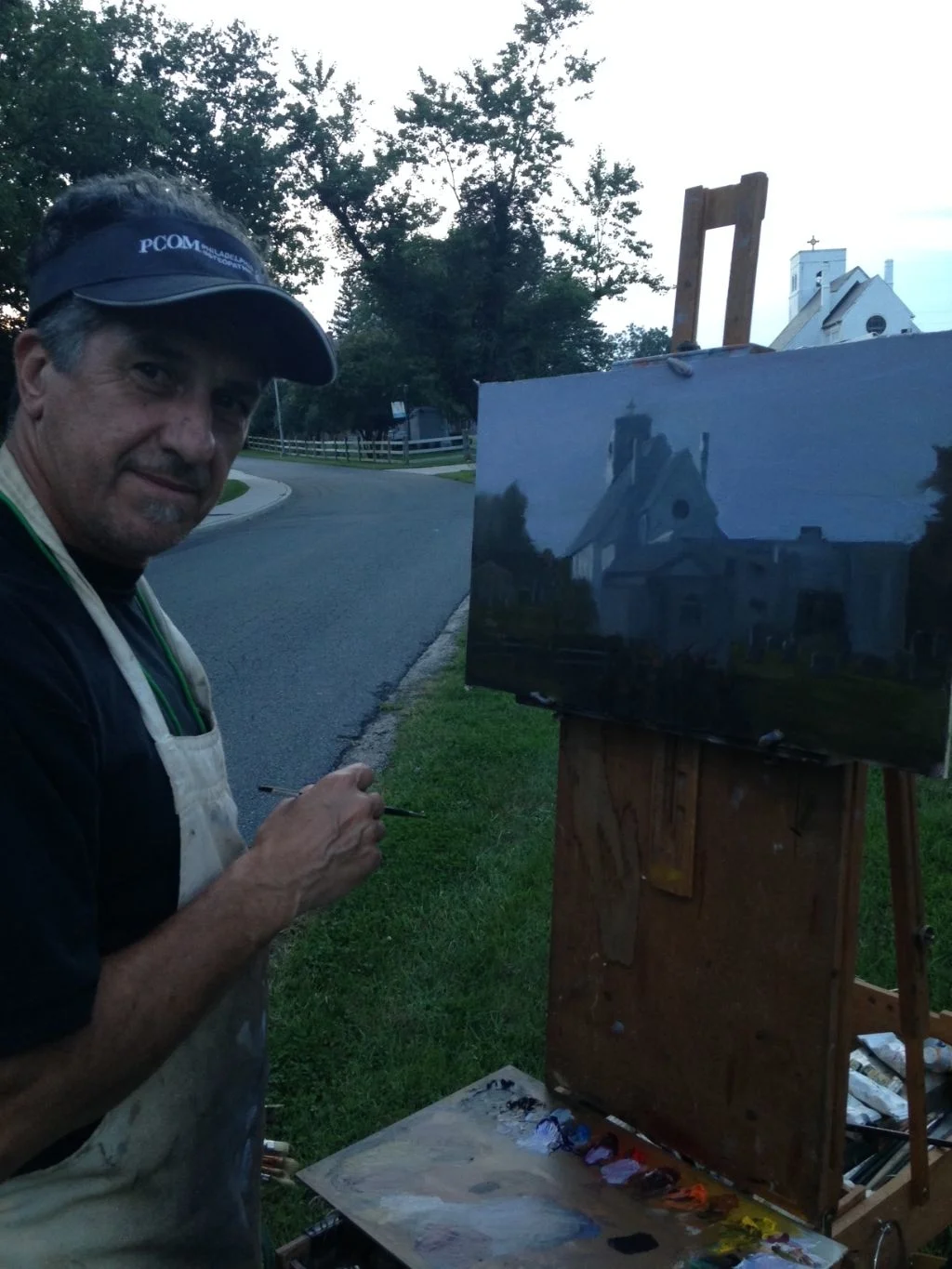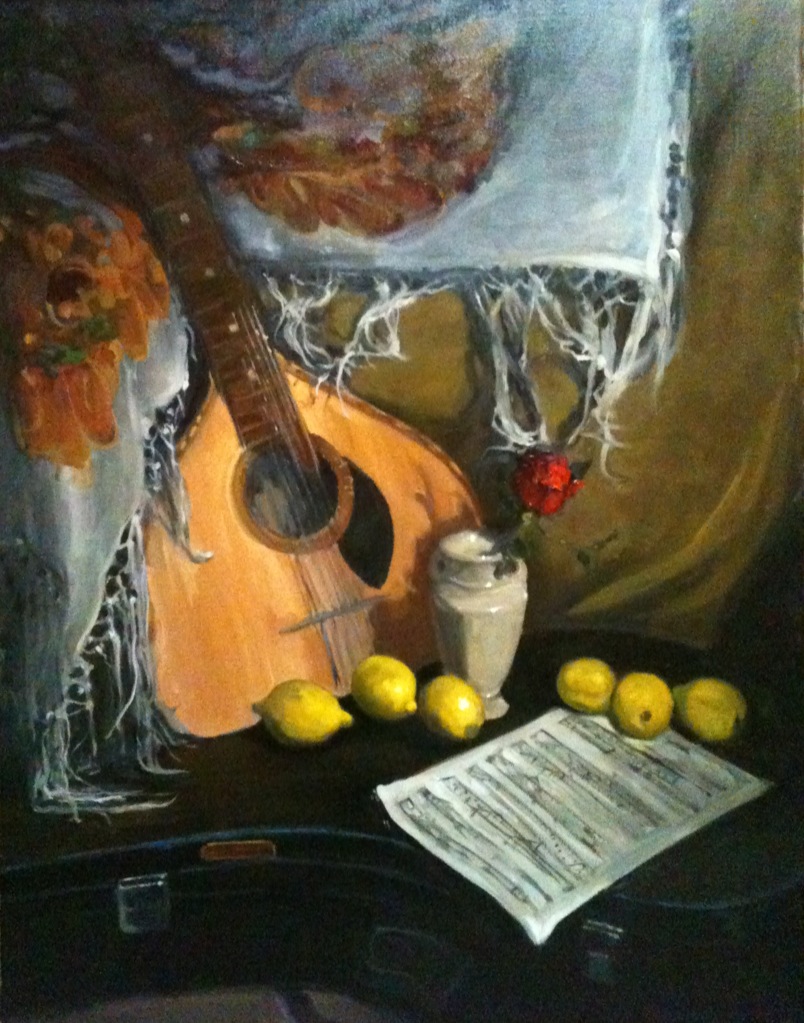Mateus Costa – Trusting the Eyes
by David P. Kozinski
To look at Mateus Costa’s paintings and drawings one would not guess that his artistic career got off to a rocky start. In 1969, just after his thirteenth birthday, his family emigrated to the U.S. from Portugal and settled in the Logan section of Philadelphia. By his teens, Costa had long been interested in visual art and responded to an ad for a drawing instruction correspondence course he found in the back of a TV Guide magazine. Not long after that, a representative of the company that placed the ad arrived at the door, announcing that the cost of the course was $1,800. Costa convinced his father, a factory-worker, to pay the money. After a time, without the benefit of personal interaction with an instructor, the fifteen-year-old lost interest in completing the assignments. He has always felt badly that he reneged on his commitment to the course. “I understand why my father was not encouraging when I [later] picked up art again.”
Costa’s still life paintings demonstrate his masterful eye for composition and the way that light affects our perceptions of the world. The lute in the middle of “Rosinha” and the lemons laid on the instrument’s black case are references to the Portuguese Fado song, “Rosinha Dos Limoes” which tells the story of a girl who sells the fruit in the market. The white shawl, draped behind the lute is part of a Fado singer’s traditional garb. The lemons’ shapes and their alignment remind Costa of the notes on the sheet of music, seen near the bottom of the oil painting.
Both “Still Life with Peaches” and “Still Life with Beets” feature tasty-looking edibles but, more importantly, divide the canvas in arresting ways. In the former, the fruit and the blue orb – which is actually a Chinese wine bottle – rest on a drafting table, the adjusting knob of which is visible just left of center. The table’s stand and surface form a grid in which Costa depicts shade, shadow and reflection. The peach colored reflections in the table top make the smooth surface all the more inviting; while the red sash, attached to the wine bottle and located just about dead center, adds a dash of intensity to an image with mostly subtle hues. In the latter, the purple beets with their green, purple-veined leaves and the maroon saucepan are apparently placed on a countertop behind which a blue vase and a Kahlúa bottle stand on a table. In making this painting, Costa set himself a goal. Reading a book by artist Kevin Macpherson, he was inspired to use a palette as limited as the one the author recommended. Costa chose ultramarine, alizarin crimson, cadmium yellow pale, plus white. The 36” X 36” painting’s vividness is testimony to how a myriad of shades can be created using only primary colors.
Costa credits his Olney High School art teacher, Karen Saler, who went on to become an associate professor at the Philadelphia College of Art (now University of the Arts) with nurturing his artistic talents. They remain in touch and Costa says it still feels strange to him that his former teacher now treats him like a colleague, rather than a student, valuing his opinions regarding their shared vocation.
After high school, he applied for and won a Board of Education scholarship that covered his entire tuition to Tyler School of Art in Philadelphia. After eighteen months or so at the school, Costa realized he had again made a mistake. Abstract art was dominant at the time (1975 – 1980) and his teachers didn’t seem to know what to do with a student who was entirely interested in representation. He was determined to stay the course this time and went on to earn his BFA as well as a teaching certificate that he never used. Instead, he supported his family in the real estate business and put art aside for five years. He recalls that after his daughter, Cristiana, was born, “I found myself doodling sketches of her, at first on paper plates because they were at hand. Then I got a sketch book and set up a studio at home.” He never took any more formal art instruction but decided instead, “to trust myself, my eyes.”
Like his still lifes, Costa’s portraits display careful attention to composition and a balanced use of color. For a while, Costa painted with a group on Sunday mornings, working mostly with nude models, at the Abington Art Center in Jenkintown, PA. New to the class, Costa inadvertently set up to work in a fellow painter’s preferred spot. After the initial awkwardness, they struck up a conversation. Costa mentioned wanting to work with clothed models and “Maurice” suggested he attend Wednesday morning sessions at Delores Campbell’s studio near Chestnut Hill, in Philadelphia. Artists paid a small fee and the models posed for three and a half hours. He took advantage of these weekly sessions as often as he could for more than three years, first drawing and then painting. “I learned to paint with that – no instruction, just paint every Wednesday morning,” Costa recalls. “Study in Blue and Red” is an example of the work that came out of this experience. The oil painting presents a seated woman, facing the viewer, with vases of cut yellow flowers brightening the left side of the picture.
The portrait of the man in the red tee-shirt is one of many of his friend, “Raul,” who, Costa observes, “is not a painter himself but has been very supportive and always willing to model.” While the red-orange, seen in the seated figure’s shirt and bandana, is the work’s stand-out color, it is balanced by the blue of his trousers and darker shades at the bottom left, and by the pale gold hue of the armchair. The crook of his folded left arm is subtly echoed by the curve in the base of a table on which a thick book has been placed.
Costa’s favorite artists include Rembrandt, Vermeer and the whole Dutch Golden Age school; Velasquez and Caravaggio; Americans like John Singer Sargent and Philadelphia’s Cecelia Beaux and Thomas Eakins. He particularly admires the brushwork of Spanish painter Joaquin Sorolla; Anders Zorn, a Swedish artist; and Beaux.
Although he prefers to work with models throughout a portrait’s creation, Costa will use photographs when necessary. The painstakingly detailed cross-hatching that went into his graphite portrait, “Jocelyn,” required reference to a photograph of his son’s friend when she could not sit for the entire process. Costa intentionally left the section below the young woman’s face unfinished, “to show that [the drawing] was done by hand – it’s not a photograph.” To draw “Waiting,” (2015) he had the luxury of a model who sat in the same pose over the course of four three-hour sessions. The charcoal on toned paper drawing depicts a seated woman facing left and away from the viewer’s direct gaze. The artist notes that it is, “The pose of someone slightly looking away from you and into this unknown space [and] carries that feeling of waiting.” He adds, “I enjoy spending time to truly understand the form I am drawing. When you work with that kind of time available, the idea is for the artist to truly dedicate himself to the sensitivity of how light effects form. There is time to slow your process and be able to develop the variety of values that are required to depict a realistic image.”
Costa has received numerous awards and prizes for his work. The Philadelphia Sketch Club – whose website describes it as, “America’s oldest club for artists,” and as having existed since 1860 as meeting place, forum for ideas and a bridge between the creators and supporters of art – awarded him the Domenic DeStefano Memorial Medal, First Prize, for works on paper. Last autumn, he participated in the Worcester County Arts Council’s plein air competition, “Paint Berlin,” in Berlin, MD in which his painting, “St. Paul’s Church,” received four awards: First Prize, The Artists’ Choice Award, The Legislative Award, and The Board of Directors Award.
“An Artist’s Vision” was the name of the solo exhibition that Costa considers his first. Held in 2010, the show contained some 30 of his artworks and was held, as he recalls, “in Newark, NJ at a Portuguese place called CREA…Half of the show were figures, mostly family and close friends, and the other half were still life paintings.” He notes, “I went on to have a few more shows there and did many workshops and demos at this venue.” Asked for more information about his exhibits, Costa replies, “The other show I felt pretty good about was actually a group show in 2016 in New Hope at a gallery called Gold Light. The reason that comes to me is that the show concentrated on contemporary realism painting and drawing and I felt the work that had been selected was absolutely top notch.” In 2006 he was one of two artists invited to show his work at the galleries at Rydal Park, “which is actually a senior citizen place. I showed a selection of figure drawings and paintings.”
Costa became a member of the Manayunk-Roxborough Art Center in Philadelphia in 2017, joining the Artists’ Co-Op, and has since exhibited his work there regularly. In the autumn he began a labor of love, creating portraits of various art center members.
The artist’s journey may have begun with a few fits and starts, but Costa’s willingness to take the time to appreciate his subject, and to let his hand be guided by what his eyes take in, have set him on a sure path to sharing his talents with anyone who will slow down, and see.







